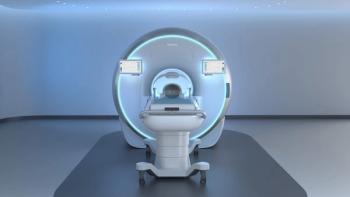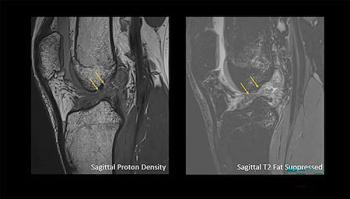
MR imaging tops x-ray, scintigraphy for bone metastases
A spate of European studies within the last year contributes to the evidence that MRI may soon replace scintigraphy and x-ray to detect bony metastases and soft-tissue involvement.
A spate of European studies within the last year contributes to the evidence that MRI may soon replace scintigraphy and x-ray to detect bony metastases and soft-tissue involvement.
In one study, Dr. Frederic E. Lecouvet, a professor of musculoskeletal radiology at Saint Luc University Hospital in Brussels, and colleagues prospectively enrolled 66 consecutive patients with a high-risk prostate cancer profile who underwent MRI of the spine and pelvis in addition to a standard sequential imaging workup. The imaging workup included technetium-99m bone scintigraphy, targeted x-rays in patients with inconclusive bone scans, and on-request MRI in patients with inconclusive bone scans and x-rays (J Clin Oncol 2007;25[22]:3281-3287).
They found that MRI alone was more sensitive (100%) than the combination of the other tests (63%). MRI's specificity (88%) also topped the combination of the other tests (64%). MRI modified therapy by finding metastases in about a third of patients considered negative and almost half of those with inconclusive results by standard imaging.
The MRI technique-detection of foci of abnormal signal intensity on T1- and T2-weighted fat-saturated images-is quite simple, Lecouvet said. He added that a larger multicenter trial is under way to assess reproducibility.
Dr. Joan Vilanova from the Ressonancia Girona MRI Clinic in Spain found whole-body MRI more sensitive and specific than scintigraphy in detecting bone metastases in 24 patients. MR also provided additional information regarding nonskeletal lesions, especially in the lungs, liver, and lymph nodes, Vilanova reported at the 2006 RSNA meeting.
Dr. Stephen Eustace, a professor of musculoskeletal radiology at Cappagh National Orthopaedic Hospital in Dublin says that whole-body MRI should now be regarded as the test of choice for staging skeletal metastatic disease. Scintigraphy's main failing is the indirect nature of its visualization, Eustace told delegates at the 2007 annual meeting of the European Congress of Radiology held in Vienna. He stressed that MRI should be the modality of choice to image multiple myeloma.
Dr. Michela Zacchino and colleagues at the University of Pavia in Italy found that MRI revealed more extensive involvement of multiple myeloma in 107 consecutive patients compared with x-ray. While x-ray resulted in more false positives, MRI changed clinical management in more than 24% of patients, Zacchino reported at the 2006 RSNA meeting.
Responding to the study by Lecouvet et al, Dr. Michael M. Graham, director of the University of Iowa's nuclear medicine program and the SNM's vice president-elect, said that the success of using MRI in this setting depends on whether insurance companies and Medicare are willing to pay for it.
"The implications largely hinge on the cost-effectiveness. In Belgium, because of reimbursement, it's actually less expensive to go with MRI compared with the standard sequential workup. But in other countries, including the U.S., it's quite the opposite," Graham said.
The momentum in favor of MRI, however, may be unstoppable as the evidence mounts and as referring physicians learn of its efficacy.
"Our oncologists are now asking us to perform whole-body MR instead of scintigraphy in certain protocols," Vilanova said.
Newsletter
Stay at the forefront of radiology with the Diagnostic Imaging newsletter, delivering the latest news, clinical insights, and imaging advancements for today’s radiologists.




























